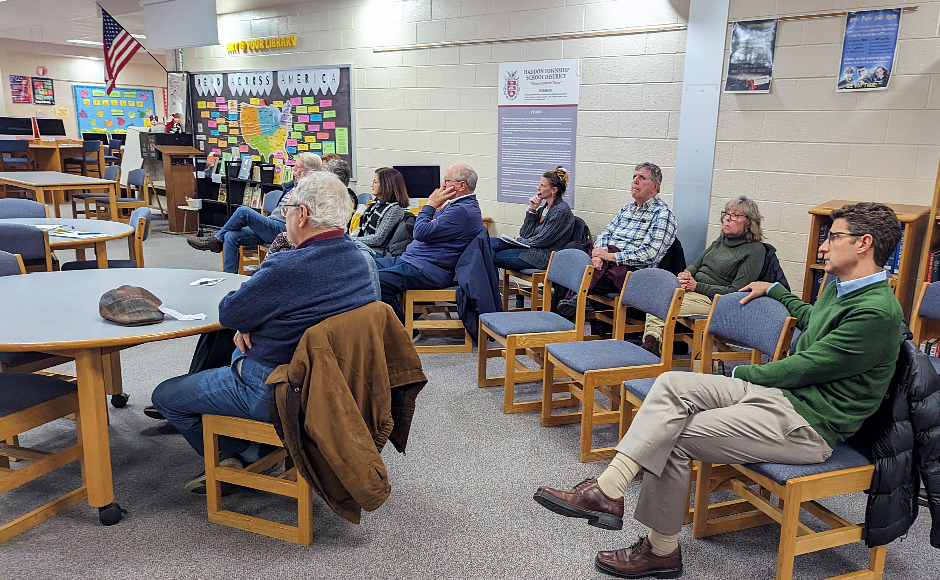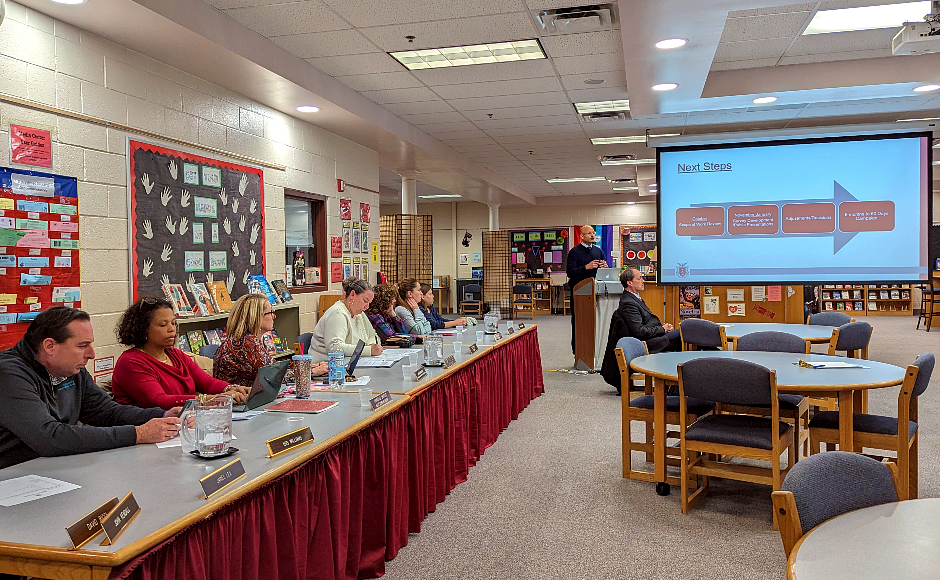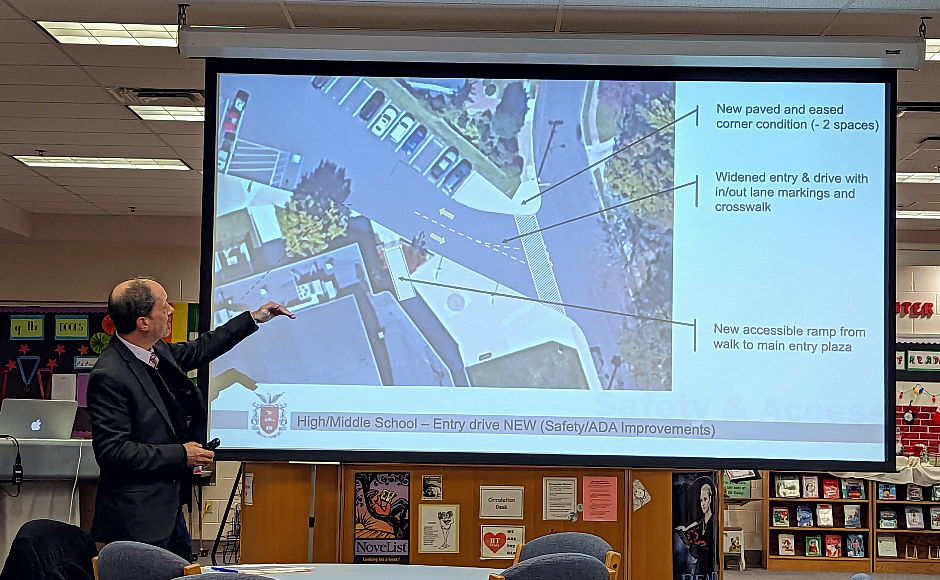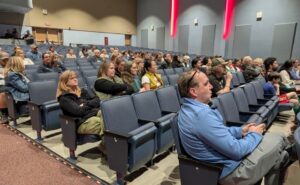As the township heads to a vote on improvements to district facilities this spring, the Board of Education addresses a handful of issues central to the question that will be put before voters.
By Matt Skoufalos | January 3, 2024
On March 12, Haddon Township voters will head to the polls in a special election to decide whether to approve an anticipated $30.5-million bond referendum that will make improvements to its public school district facilities.
The township last approved a bond measure 10 years ago, in 2014, when it greenlit $39 million of work that then-Superintendent of Schools Nancy Ward described as “meat-and-potatoes” fixes.
Whereas the prior bond measure focused primarily on upgrades to the Haddon Township neighborhood elementary schools, this proposal centers on improvements to its high-school campus.
Conservative estimates put forth by the district posit that about one-quarter of the costs will be eligible for state aid reimbursement, resulting in some $22 million in borrowing that will need to be covered locally.
Based on those figures, the bond impact would amount to about $220 annually per household for a home at the median value in Haddon Township, which is $279,000.
If the measure passes, the bulk of the work would be done over the summer of 2025 in advance of the 2025 school year.
After a two-year process that included district visioning, community focus groups, and school-board-level planning, a handful of key priorities comprise the core of the referendum.
They are:
- supporting its full-day kindergarten expansion
- improving district facilities and addressing safety concerns
- building capacity for “future-ready” programs
- improving vocational education options
- addressing wellness and extracurricular needs
At a December 2023 meeting of the Haddon Township Board of Education, Scott Downie, principal of the Hamilton-based Spiezle Architectural Group, spoke about each of these with residents.
Among the safety changes posited in the referendum, improving the flow of traffic at the entrance to Haddon Township High School is foremost. Downie said engineers hope to solve “a number of challenges” involving interactions among buses, cars, and pedestrians there.
Plans include widening the driveway, adding “a true, one-lane-in, one-lane-out entrance,” expanding sidewalk corners at the street to facilitate foot traffic from the neighborhood, and incorporating a handicap ramp at the building entrance, he said.
Within the high school, the proposal would create spaces that both support vocational studies, and are adaptable to curricular changes. Elements like movable walls, modular seating, and the capacity to support emerging technologies are all contemplated in the referendum plans.
“We’re pretty sure the skills the students will need in the future will be collaborative,” Haddon Township Superintendent Robert Fisicaro said. “We don’t know what’s going to be most necessary five years from now, so we’re trying to provide ourselves with a little flexibility.”
Upgrades also will touch the high school media center, music wing, and locker rooms, all of which are slated for functional improvements.
“Kids should be able to come to school and be excited about the environment,” the superintendent said.
Some of the biggest changes will come in the conversion of an existing automotive garage into two new classrooms, one of which will become a vocational education space, as the other transitions to a multi-use “athletic and wellness space,” supporting holistic physical activities including breath work, dance, and yoga, Fisicaro said.
Improvements to the high-school campus also touch on outdoor learning and performance spaces, like a grass-and-concrete amphitheater. But its major engineering challenges involve addressing stormwater management at the HTHS tennis courts, and broadening access to athletic fields.
The district believes these can be solved by installing artificial turf playing surfaces, which are intended to improve drainage, as well as creating broader opportunity of use for the student teams and local clubs that presently compete for time there.
“Artificial turf is popular with school districts for a couple of different reasons,” Downie said. “The maintenance level of natural grass is high, and it needs down time. Grass migrates to dirt, and rocks, and other things that create issues.”
As far as access, Downie said that “school schedules are ridiculously overloaded.
“A lot of community programs would love to use those fields, but can’t,” he added.
Some residents in attendance expressed concerns about artificial turf fields — namely, whether they’re environmentally sound, safe for developing teens, and long-lived enough to not incur heavy costs when the time comes for their replacement.
Downie said the top layer of an artificial playing surface can last up to 12 years, depending upon its usage, whereas the base installations beneath may only need to be replaced every 24 or 36 years.

Haddon Township residents discuss plans for the district school bond referendum. Credit: Matt Skoufalos.
Board member Jim Lex said the community must address the limited access to playing surfaces in the district, which also leads to the overuse of Recchino Field.
“I wouldn’t commit taxpayer dollars if I didn’t think it was worth going ahead with,” Lex said.
“I know it’s a concern, but I think it’s one of these things the community would benefit from.”
Haddon Township recently added a full-day kindergarten program, and although the district explored the possibility of adding a full-day pre-k facility in the new referendum, “that bite at the apple proved to be a little bit too big,” Fisicaro said. Constructing a dedicated, full-day pre-K building would have accounted for half the costs of the current proposal, he said.
“I don’t think this board would rule out an early childhood center, but an early childhood center needs to be a facility that’s only one level,” Fisicaro said. “We only have one building that’s one level, and that’s Van Sciver, and that’s our biggest school.”
“We also have some concerns with what would be required of us if we participated in the state pre-K, because it doesn’t necessarily align with our current pre-K program,” he said.
The board explored the possibility of acquiring and upgrading the former Holy Saviour School property to use as an early childhood education center “several times,” but the estimated cost for doing so “wasn’t reasonable,” Fisicaro said.
Nonetheless, the district will continue to work towards developing such a center, the superintendent said.
“Our kindergarten numbers have been going up; part of it was because we added a full-day kindergarten,” Fisicaro said.
“The best way to continue to build enrollment is to make sure your schools are high-quality.”




